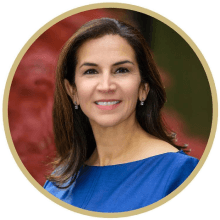EXECUTION
How certain is your plan during uncertain times?

We are all too aware of current events nationally and around the world. For two years running, we have been navigating uncharted territory. Businesses (and their consumers) are still enduring supply chain disruptions, longer lead times for raw materials and products, higher shipping costs, the ripple effect of the war in Ukraine, and the far-reaching impact of inflation on our daily lives. At times, it feels like too much uncertainty.
When the landscape around us is so unfamiliar and uncertain, how do you manage and grow your business? Here are 4 things you can do:
● Have the right people on the bus
● Focus on what you can control
● Know your numbers
● Think big picture
This month, let’s dive into the first bullet regarding people.
Right People on the Bus
One of the most lasting – and often repeated – principles from Jim Collins’s book Good to Great is “having the right people on the bus, in the right seats.” The challenge for owners is identifying if you have the RIGHT people in the RIGHT seats.
One question we ask our clients is “would you enthusiastically rehire everyone on your team?” If the answer is no, then you have some work to do. Having the right people is key to adapting quickly to a changing world.
Do you know who has the greatest potential to help the company succeed?
Who is most likely to undermine the company culture?
Find out by downloading the Player Grid and following these steps:
● Start with your Key Executives. Ask yourself, “are they productive AND do they align to the company’s values?” Honesty is important here. Once everyone has been assigned to a block, sit back and assess the grid.
● A-Players take very little energy to manage. They bring their own enthusiasm and motivation to the table and are both productive and aligned with the company’s core values. They are your leaders, perhaps even part of your succession plan.
● B-Players are poised to level up with the right resources, educational opportunities, and leadership training. Take a closer look at what might be holding them back. Perhaps all they need is a bit more professional development, or they may simply not be in the right seat and would excel in a different role within the team.
● The C Trap catches the people who are not aligned to the values nor are they productive. This results in them taking a lot of time and energy from the management team. Do everyone a favor and free up their future (aka let them go). This action will allow you to invest energy in your A- and B-players.
● The B/C Dilemmai s where the deeper work lies. It’s here that you must sort through the benefit of a productive worker versus the cost their negative attitudes and actions have on the team and company culture. Please take note: your A-Players are watching. They will leave if you tolerate a B/C teammate undermining their work.
Once you have done this with your leadership team, encourage each of them to apply it to their direct reports. It can be an enlightening experience and help shore up the organization to weather uncertain times.
Join Family Biz Matters to keep reading this 4-part blog series, as well as access more tools, resources, and insights to help your organization grow in uncertain times.
If you are ready to better prepare yourself, your people, and your business for whatever lies ahead, join us for one of our upcoming interactive workshops in September and October 2022. If you have an urgent need, book a complimentary 60-minute session with me, and let’s create a 30-day action plan together
You may also like…

BLOG | FAMILY DYNAMICS / GOVERNANCE
The 4-Letter Word Owners Can’t Afford NOT to Talk About: EXIT
I’ve had my share of family business owners who avoid discussing this four-letter word to the point of pure denial, quickly ending the conversation when this word bubbles up. The word? E-X-I-T. It sounds so final. The brutal truth is that 100% of owners exit the business, yet only 50% – just 1 out of 2 owners – will do it on their terms...
Read More
BLOG | LEADERSHIP
Family Business Peer Groups are Gamechangers for the Next Gen
Many family-led companies hire business consultants to grow the business. Some even send their emerging leaders to personal development programs. But there is a gap – and it’s a BIG one.
Read More
BLOG | PEOPLE / TALENT
Unlocking the Golden 5% in Your Employees
The Golden 5% is the full expression of our ability, multiplied by our maximum possible effort, multiplied by our full contribution of heart. It is the performance equivalent of what we offer in a deeply loving relationship – the absolute best of ourselves. And yet, we rarely give it or reliably inspire the giving of it by others in organizations. Why?
Read MoreWhere Family Businesses Come to Grow & Learn
At Compass Point, we make it easy to get insights, training, tools, and articles straight to your inbox and help family business owners and their team continue to grow, learn, and lead.


